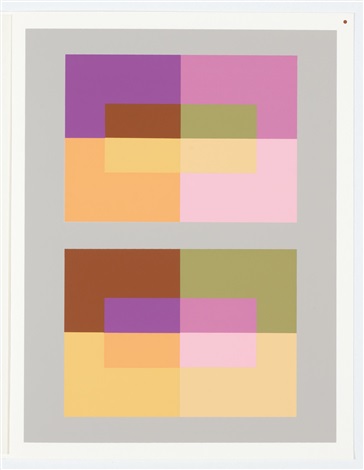

I had taken a couple of drawing classes in college, so I had some background, but I first read the text straight through, without looking at the color plates. You learn to flip from the text to the images and examples, but it requires a leap of faith and energy at first. The format is unusual in that the main text is separate from the images. The book is unlike any other I’ve ever read or experienced. Took the form of a slow process and many readings.ĪJP: I do remember having the impression that I was in an experiment by a mad scientist. So, I would say that my understanding of what Albers was doing in this unusual “book” When I did get around to reading the text, I was at first completelyīaffled.


I had probably been at the Albersįoundation for a while before I “discovered” Interaction of Color and, rather than being a suddenĪwakening, it seeped into my understanding of Albers quite surreptitiously, in the form of an artifact, Kind of an impression did it make on you?īrenda Danilowitz: As an art historian in college, although we did touch on Albers-as I recall in aĬlass on Impressionism-color, as material, was not ever a topic. Picked up a paperback, or perhaps you were introduced to the 1963 portfolio from the start? What You’ve been thinking about Interaction of Color as chiefĬurator of the Albers Foundation for more than thirty years. I imagine many people come across the book this way, outside of the classroom or in an art-makingĬontext, wandering through bookstores. Mind: what exactly does it mean for colors to interact?

The title is straightforward but poses an immediate question, at least in my The paperback is affordable and portable and compelling in its simplicity. I flipped through it standing in the aisle and then In this piece, Brenda Danilowitz and Amy Jean Porter discuss the far-reaching impact of Albers’s transfixing book.Īmy Jean Porter: I think I first encountered Interaction of Color in a New Haven bookstore-it would In 2013, the anniversary edition presented a significantly expanded selection of close to sixty color studies alongside Albers’s original text. First a limited silkscreen edition with 150 color plates, Interaction of Color later also appeared in paperback in 1971 featuring ten color studies chosen by Albers, and has remained in print ever since. Conversation between Brenda Danilowitz, chief curator, and Amy Jean Porter, assistant curator,īoth of the Josef and Anni Albers Foundation.ĭescribed as “one of the most important books on color ever written” (Michael Hession, Gizmodo), Josef Albers’s classic Interaction of Color is as integral to art education today as it was when it was first published in 1963.


 0 kommentar(er)
0 kommentar(er)
